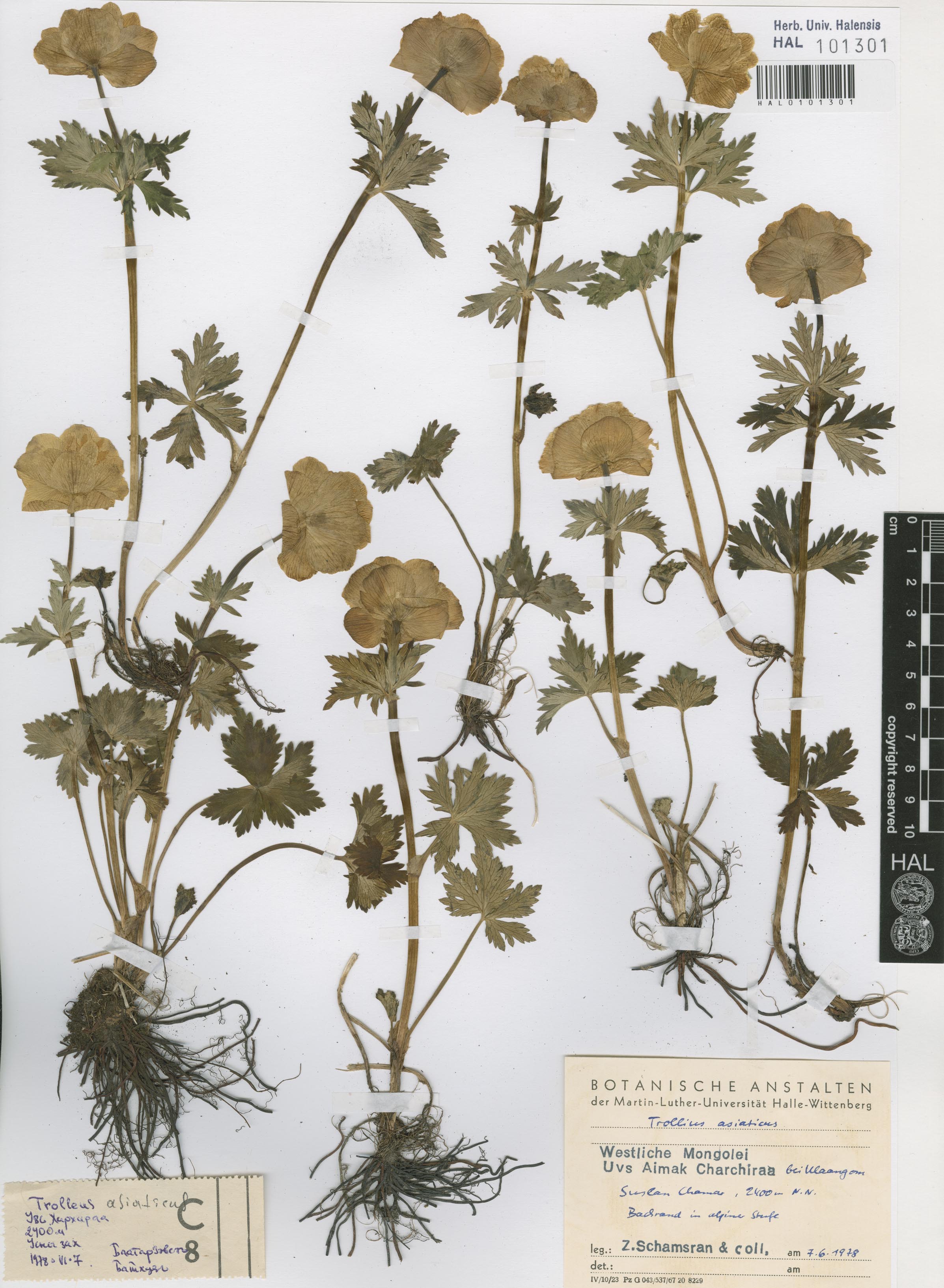The collection of Mongolian plants in HAL
The collection of Mongolian plants is one of the largest and most important collections of higher plants in HAL, which is stored separately. It currently comprises about 12.500 specimens of 1698 taxa (species and subspecies) belonging to 533 genera and 115 families. According to Urgamal et al. (2014), 3127 species and infraspecific taxa within 683 genera are currently known for Mongolia. Thus the Mongolian herbarium in HAL encompasses about half of all Mongolian plant species. The arrangement of this collection is based on ENGLER’s System and the taxonomy largely follows Gubanov (1996).
The oldest Mongolian specimen in HAL goes back to the 18th century. The type specimen of Ribes fragrans Pall. was collected by Johann Erasmus Sievers (1762-1795) and identified by Carl Ludwig von Willdenow (1765-1812). In the 19th century Alexander von Bunge (1803-1890) collected numerous botanical specimens during the course of his journey between 1830 and 1831 from Siberia through Mongolia to Bejing and return, and thus became one of the first explorers of the Mongolian flora (Hilbig 2013). The first Mongolian herbarium samples deposited in HAL from the 20th century were collected by Hermann Meusel around the airport of Ulaanbaatar during a stop on his journey to China (Hilbig 1984). But the majority of the specimens has been collected during the Mongolian-German Expeditions between 1973 and 1989, mainly concentrated on the exploration of the central and western parts of Mongolia. In the 1990s and beginning of the 21st century, the exploration of the southern part of Mongolia, especially the Gobi region, came into stronger focus. An overview of the research expeditions between 1962 and 2006 conducted by botanists from the University of Halle is given in Hilbig et al. (2007). The youngest Mongolian herbarium samples deposited in HAL were collected by W. Hilbig in 2010, when he explored the hitherto comparatively less investigated eastern part of Mongolia.
Most of the Mongolian plant samples stored in HAL were collected by W. Hilbig as well as E. J. Jäger, together with their Mongolian colleagues D. Bumžaa and Z. Schamsran. Additional collectors are D. Frank, H.-D. Knapp, J. Peterson, H. Ansorge, K. Helmecke, G. and S. Miehe, H. Dörfelt, B. M. Mirkin and K. Wesche.
Numerous specialists from different countries were involved in the determination of the plant samples. Hilbig (2006: 329) provided a list of persons who dealt with specific taxa. In all a number of 102 botanists identified Mongolian plants deposited in HAL. The family Chenopodiaceae is a typical example. 315 of 513 specimens were identified or revised by H. Freitag (Kassel), V. I. Grubov (St. Petersburg), R. Rilke (Greifswald), G. Kadereit (Mainz), G. A. Peškova (Irkutsk), Č. Sančir (Ulaanbaatar), R. Tungalag and H. Heklau (Halle).
About 1300 herbarium sheets have been determined, confirmed or revised by S. Rilke and S. Starke in the course of the DFG-granted project “FloraGREIF – a virtual guide and plant database as practical approach to the flora of Mongolia” (Rilke & Najmi 2011). Between 2012 and 2014, an additional DFG-granted project has been conducted at the Herbarium of the Martin Luther University (HAL) within the framework of which the complete collection of Mongolian plants housed in HAL has been databased and geo-referenced. Looking forward to obvious synergy-effects, the FloraGREIF-database was used as platform. Thus the label data of the complete Mongolian plant collection of HAL are now available at
http://greif.uni-greifswald.de/floragreif/
by selecting HAL as Herbarium in the search mask for records.
In addition scans of the herbarium sheets are available for 1235 of the specimens from HAL.





